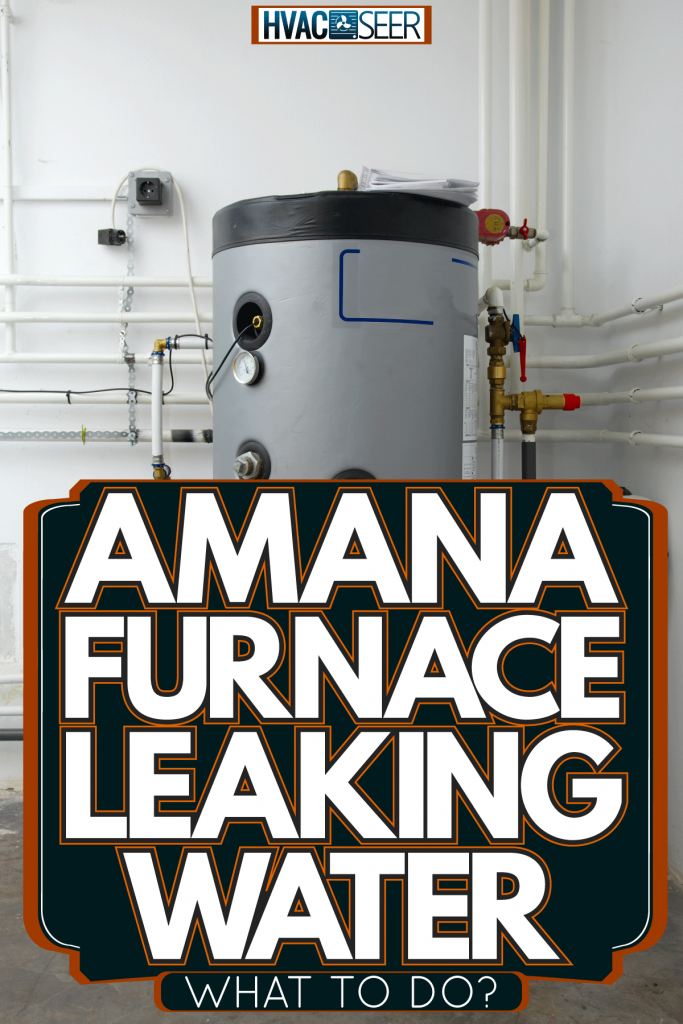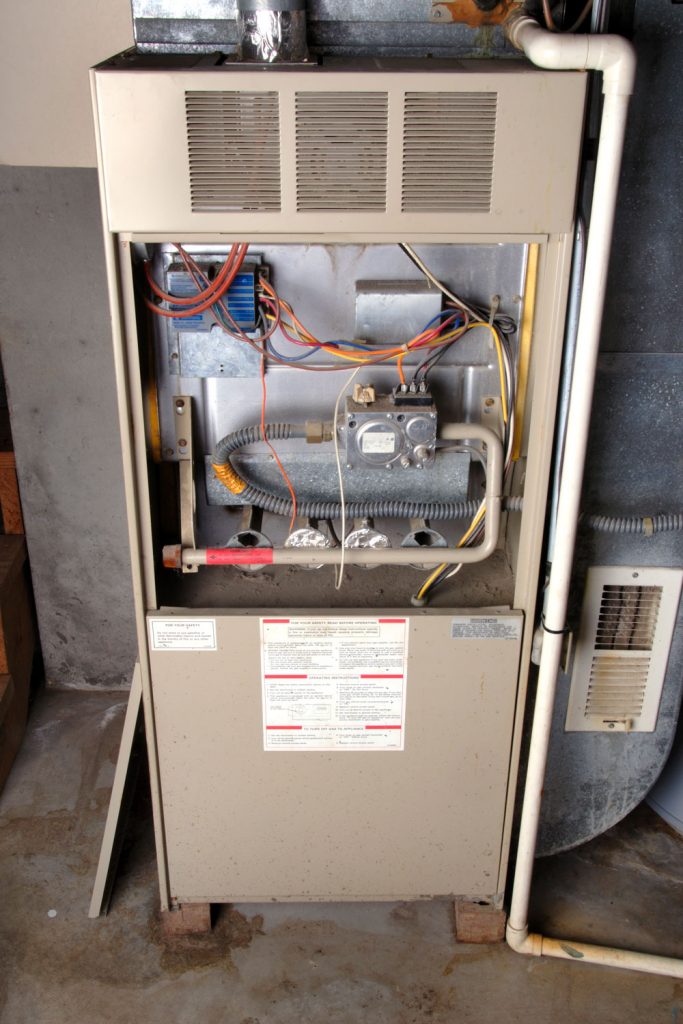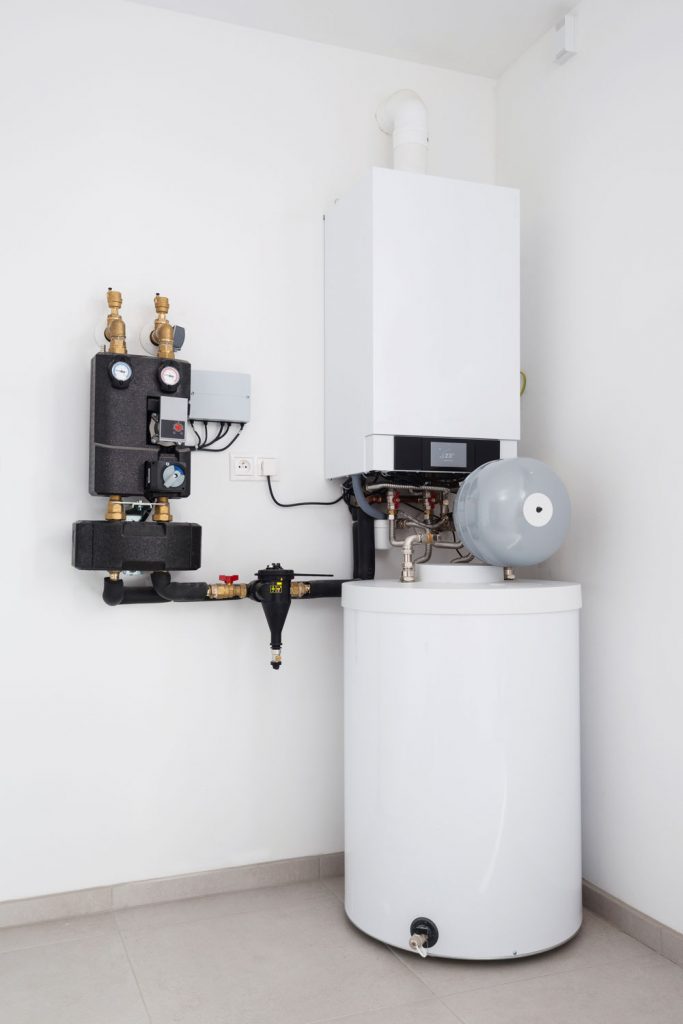You may be surprised to find that your furnace is leaking water. After all, furnaces don't operate using water as a fuel source. So what issues will cause them to leak? And more specifically, what will cause an Amana furnace to leak? We have done a bit of research on Amana furnaces, and in this post, we'll discuss the main causes of this.
If your Amana furnace is leaking water, chances are that it has an issue with condensation. It could be from the drain hose, the condensate pump, drain pan, or an attached humidifier. It's important to first consider what type of furnace you have.
If the furnace is a high-efficiency unit, it will have a white PVC drain pipe from which condensation can leak. If there is a metal pipe, chances are that the furnace is not a high-efficiency unit.
For these units, the condensation is likely coming from another appliance. In this case, it's best to check nearby appliances such as humidifiers and air conditioning units.
High-efficiency furnaces release gases that create condensation. The condensation, in turn, flows through the PVC pipe and drains into the drain pan or pump. If there is water leakage during this process, the condensation won't be able to drain properly. Let's look at some of the most common places it will leak.

Reasons Why High-Efficiency Furnaces May Leak Water
The drain hose
The drain hose is located at the end of the PVC pipe. Over time, the hose can become clogged with soot, debris, and dust. As a result, the condensation will begin to leak from the holes if it can't escape elsewhere.
The best thing to do in this case is to simply clean or replace the drain hose, especially if it is old or damaged in any way.

The inducer assembly
As condensation runs down the flue pipe and out of the drain hose, it enters the inducer assembly. Wear and tear can cause the inducer assembly to crack over time. As a result, water will begin leaking from the pipe.
If the inducer assembly is cracked, it will need to be replaced, as it cannot be repaired. These assemblies average anywhere from $50 to $80 depending on the Amana model.
The condensate trap
The condensate trap can also leak water. This will typically happen if the trap is clogged with dirt, debris, or minerals from water. Note that not all high-efficiency units have a condensate trap, so this may not apply to every model.
The condensate pump
Other than the condensate drain hose, the condensate pump is the most common culprit of water leaks. Like other components, it can become clogged over time and block the drain, resulting in water leakage.
You can usually tell if the condensate pump is leaking by the formulation of rust stains around the cabinet of the furnace.
In other cases, there may be water on the floor near the bottom of the base. Sometimes the pump can malfunction, which will cause water to back up and overflow, resulting in a rather large leak that can cause significant water damage.
If this is the case, it's best to have a professional HVAC technician replace the pump as soon as possible. The average condensate pump will last about 6 to 10 years.
Why Non-High Efficiency Furnaces May Leak Water

If you have a conventional furnace that is operating at an average level of efficiency, it won't produce any water. So if you notice standing water around the unit, it's likely coming from a nearby appliance. Here are some of the most common culprits.
The air conditioner drain pan
Though some air conditioning units are located outside, they're still connected to the HVAC system. So when the units are running, they'll generate water and condensation. The drain pan is located beneath the evaporator coil.
Some air conditioners have a secondary drain pan found at the bottom of the unit. The drain pan is used to catch any excess condensation coming from the unit. So if there is a hole or crack in it, the water will spill out.
Frozen evaporator coils
If there are refrigerant leaks with the unit, the evaporator coils can freeze up. As a result, the unit may begin to leak water around the coils. Other times, the coils will freeze up when there is a restriction on the airflow within the unit.
Once the air conditioner unit is turned off or shuts off after a cycle, the coils will thaw out, causing water to leak in the area around them. It's best to repair this issue ASAP, as frozen coils can often crack, causing hundreds of dollars in repairs.
Hot water heater
In some cases, the issue could also be with the water heater. If the water heater has a crack or has gotten old, it may leak near its bottom. Often, water heaters are located right next to the furnace.
They can develop a buildup of sediment as they begin to age, though this is often the result of poor maintenance.
In any event, the sediment will eventually cause corrosion and degradation of the rods around the base of the heater. Once a leak starts, the water heater will continue to leak until it's replaced.
Humidifiers and Dehumidifiers
Dehumidifiers attached to furnaces perform the same function as evaporator coils. As they can draw moisture from the air, they release the condensation into a drain pan.
If you notice an excessive amount of water around the pan (which is near the furnace), chances are that it's coming from the dehumidifier and not the furnace.
However, it's best to check the furnace's condensate line to ensure that the leak is at originating there. Humidifiers attached to furnaces can also start to leak. You may notice water leaking around the humidifier during the winter season when the humidifier is likely used.
Check the fitting on the water supply connected to the humidifier as well as the drainage hose. If there are any leaks, they'll typically come from these two places. You can also use Teflon tape or adhesive to repair any damage to the humidifier's hose.
Find this Teflon tape on Amazon.
Want to see how to troubleshoot this issue? Check out this video:
Why is my Amana furnace leaking water?
If your high-efficiency Amana furnace is leaking water, it's likely due to an issue with the drain hose, drain line, or pump. If your unit is not a high-efficiency unit, chances are that the leak is coming from a nearby appliance such as a humidifier, dehumidifier, or attached air conditioner component.
Does the furnace need water to run?
No, furnaces do not need water to operate. They only need a steady supply of gas or electricity, depending on the make and model of the furnace.
However, most modern furnaces emit condensation as part of their combustion process. As a result, the furnaces will release condensation through a drainage line and hose into a pan.
Is it bad if my furnace is leaking water?
It depends on how much water is leaking from the furnace. It is normal for high-efficiency units (and most modern units are) to leak water. However, if the leak seems excessive, you may want a technician to check out the furnace.
For example, if you notice rust stains or corrosion at the bottom of the furnace, chances are that the leak is substantial. In this case, it should be inspected. Not only can the leak cause significant water damage but it can also be a sign that it requires an essential repair.
How much does it cost to fix a leaking furnace?
It depends on the cause of the leak. For example, if the drainage holes or line needs to be cleaned, the repair can be as low as $75 to $100. However, if, for example, the condensate pump or heat exchanger needs to be replaced, the repair can be as much as $200 or $500.
How long do furnaces usually last?
A well-maintained furnace can last about 15 to 20 years or more on average if it is well maintained.
Wrapping Things Up

If you notice water leaking from your furnace, the best thing to do is to try to find the source of the leak. If the water seems to come from a drainage-related part, try to repair the port or replace it. If the issue seems more complex, it's best to reach out to a qualified HVAC technician for assistance.
Before you go, be sure to check out these other posts:

